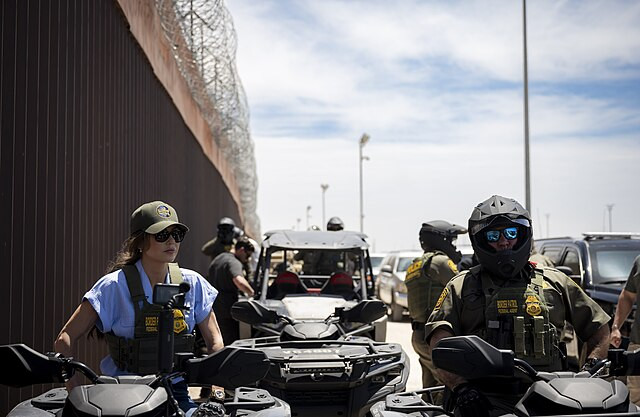The Defense Department has established a second military enforcement zone along the U.S.-Mexico border, this time extending from Fort Bliss in El Paso, Texas, as the Trump administration intensifies its crackdown on illegal crossings. The move follows the creation of a similar 170-mile zone in New Mexico last month, both designed to allow active-duty troops to detain migrants under military jurisdiction.
"The establishment of a second National Defense Area increases our operational reach and effectiveness in denying illegal activity along the southern border," said Gen. Gregory Guillot, commander of U.S. Northern Command.
The El Paso zone stretches approximately 53 miles east to Fort Hancock and is considered part of Fort Bliss. According to Maj. Geoffrey Carmichael, a spokesman for Joint Task Force - Southern Border, troops are now deploying Stryker armored vehicles from Fort Carson, Colorado, to patrol the area using mobile and stationary surveillance systems. Soldiers are also posting signage warning of military jurisdiction, signaling a further shift in operational posture.
These zones are intended to circumvent the Posse Comitatus Act of 1878, which bars military forces from engaging in civilian law enforcement. "Any illegal attempting to enter that zone is entering a military base, a federally protected area," Defense Secretary Pete Hegseth said during a visit to the New Mexico zone. "You will be interdicted by U.S. troops and Border Patrol."
On Monday, more than two dozen individuals were charged in federal court with trespassing in the New Mexico defense zone, which is considered an extension of Fort Huachuca in Arizona. While troops are not conducting arrests directly, they are authorized to detain, search, and provide medical assistance to migrants before handing them off to federal agents.
The land in New Mexico, part of the Roosevelt Reservation, was transferred from the Department of the Interior to the Army, which will maintain ownership for three years. The El Paso zone marks the latest escalation in the Trump administration's border strategy, which has already seen the deployment of over 4,000 active-duty troops, in addition to 2,500 National Guard members stationed at the end of the Biden administration.
Roughly 6,600 troops-both soldiers and Marines-are now stationed across the southwestern U.S. border. The Pentagon has emphasized that troops operating outside the designated military zones remain limited to monitoring and reporting illegal activity to Customs and Border Protection, while those inside the zones can take direct action.
"This is the second area in which Joint Task Force - Southern Border service members who are already detecting and monitoring through stationary positions and mobile patrols nearby can now temporarily detain trespassers until they are transferred to an appropriate law enforcement entity," Guillot said.






